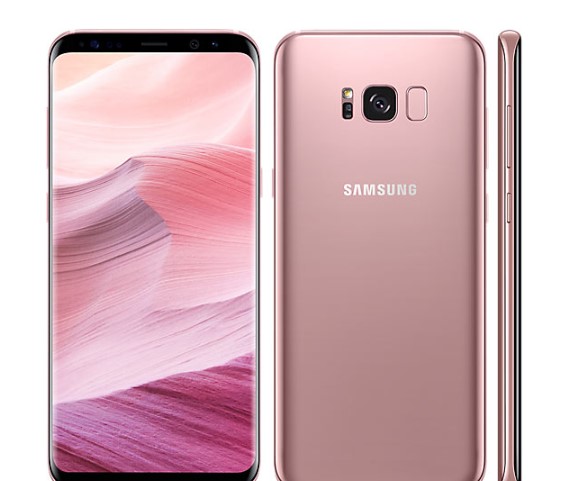Released in 2017, the Samsung Galaxy S8 Plus remains one of the most iconic smartphones in Samsung’s Galaxy lineup. As the larger sibling to the Galaxy S8, the S8 Plus introduced significant changes to the way smartphones were designed and functioned. It was not only a showcase of Samsung’s design prowess but also a testament to the company’s ability to blend cutting-edge technology with user-friendly features. Even years after its release, the Galaxy S8 Plus is still regarded as a benchmark in smartphone design and innovation.
Design and Display
The Galaxy S8 Plus was a standout for its sleek and futuristic design, which marked a significant departure from the more conventional look of previous Galaxy models. Its most striking feature was the edge-to-edge “Infinity Display,” which curved around the sides of the device, creating an almost bezel-less appearance. This design allowed the phone to have a larger screen without making the device feel bulky. With a 6.2-inch Super AMOLED display, the Galaxy S8 Plus offered vibrant colors, deep blacks, and an immersive viewing experience, perfect for watching videos, playing games, or browsing the web.
Please follow us on Facebook and Twitter.
The resolution of 2960×1440 pixels (QHD+) ensured that the display was incredibly sharp and detailed. The curved edges weren’t just for aesthetics, as they allowed users to access additional functionality through the Edge Panel, offering quick shortcuts to apps, contacts, and other tools. This design approach has since influenced the way modern smartphones look, with many devices adopting the minimal-bezel trend.
Performance
Under the hood, the Galaxy S8 Plus was powered by the Qualcomm Snapdragon 835 processor (or the Exynos 8895, depending on the region), paired with 4GB of RAM. This combination delivered smooth performance for everyday tasks, multitasking, and even demanding apps like games and video editing software. At the time of its release, the Snapdragon 835 was one of the fastest mobile processors available, ensuring that the S8 Plus could handle virtually anything users threw at it.
The phone also came with 64GB of internal storage, expandable via microSD to 256GB, giving users ample room for apps, photos, videos, and other media. With this level of performance and storage, the S8 Plus was more than capable of serving as a productivity tool, entertainment hub, and communication device all in one.
Camera
Samsung’s camera technology has long been a highlight of their flagship devices, and the Galaxy S8 Plus was no exception. The rear camera was a 12-megapixel sensor with an f/1.7 aperture, optical image stabilization (OIS), and dual-pixel technology. This allowed the phone to capture sharp, vibrant photos, even in low-light conditions. The dual-pixel autofocus was particularly fast, making it easy to take clear, detailed shots of moving subjects.
The front-facing camera was an 8-megapixel sensor with autofocus, a rarity for front cameras at the time, ensuring high-quality selfies and smooth video calls. The camera app also featured a variety of modes, including Pro Mode for manual adjustments, Panorama, and Slow Motion, giving users flexibility and control over their photography.
Battery Life and Charging
Equipped with a 3,500mAh battery, the Galaxy S8 Plus offered solid battery life, capable of lasting a full day of moderate to heavy use. The power-efficient Snapdragon 835 and the optimization of Samsung’s software helped in managing battery drain. Additionally, the S8 Plus supported fast charging, both wired and wireless, making it convenient for users to quickly top up the battery when needed. Wireless charging was a feature that Samsung had perfected over the years, and the S8 Plus made it easier than ever to use, supporting both Qi and PMA standards.
Security Features
The Galaxy S8 Plus introduced several security options, including a fingerprint scanner, facial recognition, and iris scanning. The fingerprint scanner was located on the back, near the camera, which was a point of criticism for some users due to its awkward placement. However, the addition of iris scanning offered an innovative and secure way to unlock the device, especially in low-light conditions where facial recognition might struggle.
Samsung’s Knox security platform, built into the hardware and software, ensured that the phone was secure for both personal and enterprise use. Knox added an extra layer of protection for sensitive data, making the S8 Plus a viable option for professionals concerned about security.
Software and Features
The Galaxy S8 Plus launched with Android 7.0 Nougat, layered with Samsung’s custom UI. Samsung’s software experience offers many features, including multi-window mode, a customizable always-on display, and Bixby, Samsung’s AI assistant. While Bixby didn’t achieve the same popularity as Google Assistant or Apple’s Siri, it introduced some useful features like Bixby Vision, which could identify objects and translate text using the camera.
Conclusion

The Samsung Galaxy S8 Plus was a revolutionary device when it launched, setting new standards for smartphone design, display quality, and performance. Its sleek, futuristic design and powerful hardware made it one of the most desirable phones of its time. Even years later, the S8 Plus remains a capable device, especially for users who value premium design and reliable performance. It played a key role in shaping the modern smartphone landscape, and its influence can still be seen in today’s flagship devices.





